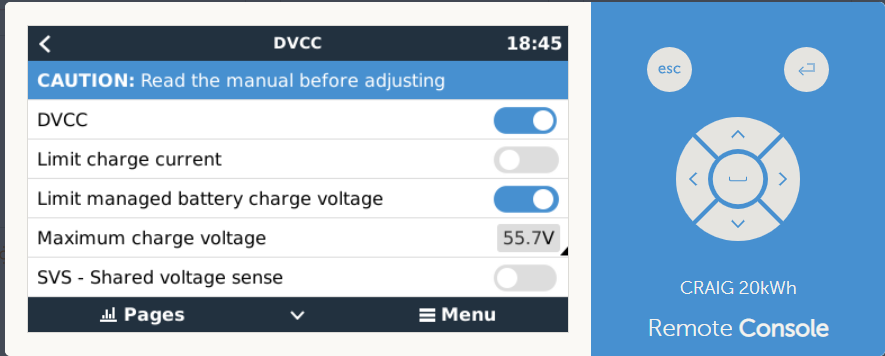I cannot for the life of me get DC Feed-in working.
Gear:
Multiplus II 5000
2x 150/35
Batrium BMS to 45kwh Lion battery
A stack of AC solar on the AC Input side
EM24 grid meter
EM24 - to measure AC solar production.
Scenario:
Battery full 4.1v per cell or 57.4v
BMS sending CCL of 0
DC Feed-In enabled
Settings:
MPII and MPPT float / absorption set to 57.4, However it doesn’t seem to make any difference as I’ve set these higher without effect.
What Happens:
With DC Feed-in enabled the MPPTs correctly go flat out. However rather than the power being inverted by the MP II and going into the grid, it goes into the battery despite it being full.
If I disable DC Feed-in the MPPTs correctly ramp down (because the battery is full)
I cannot get a safe system with DC Feed-in enabled -
It will cook the battery.
From what I can gather, my BMS is sending the correct target voltage 54.7 and correct CCL of either 0 or 0.5 ( the balance current)
I see many other posts with DC Feed-in issues but none with any resolution to this specific issue.
Note: I don’t have any limits on feed-in set.
any help would be appreciated.

